The Apple iPhone 12 mini is the smallest and least expensive device in the 12 line of devices, all released in 2020. Apple displays the specs and marketing of both the 12 and 12 mini side by side on its website, and the most significant difference is in size. The 12 mini has a 5.4-inch OLED display; the 12 has a 6.1-inch OLED display. The 12 mini weighs 133 grams; the 12 weighs 162. The iPhone 12 mini is designed to fit in your pocket, but when it comes to features, it shares almost everything with its bigger sibling, including the A14 Bionic chipset that claims to be “the fastest chipset in a smartphone.”
The devices share similar audio features as well. The iPhone 12 mini has one center front-firing and one right-side bottom-firing speaker. Both devices have two microphones for background noise reduction, and Dolby Atmos technology. They both have audio zoom that can be used when filming videos.
Audio specifications include:
- Two speakers, one center front-firing and one right-side bottom-firing
- Microphones with noise cancellation
- Audio zoom
- Dolby Atmos surround sound
About DXOMARK Audio tests: For scoring and analysis in our smartphone audio reviews, DXOMARK engineers perform a variety of objective tests and undertake more than 20 hours of perceptual evaluation under controlled lab conditions. This article highlights the most important results of our testing. Note that we evaluate both Playback and Recording using only the device’s built-in hardware and default apps. (For more details about our Playback protocol, click here; for more details about our Recording protocol, click here.)
Test summary
Scoring
Sub-scores and attributes included in the calculations of the global score.
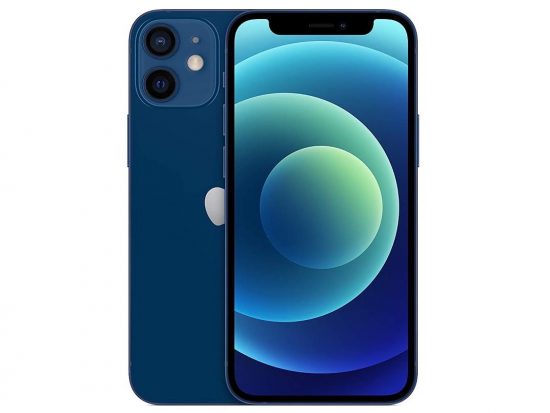
Apple iPhone 12 mini


With a global score of 73, the Apple iPhone 12 mini matches the score of the iPhone 12, putting both of them in the top 10 in our current smartphone audio rankings, just three points down from the top-scoring Xiaomi Mi 10 Pro and one point below the iPhone 12 Pro Max. In playback, the 12 mini has good timbre performance, and like most other recent iPhones, it benefits from additional high extensions. Spatial performance is also strong, with very good localizability, balance, and realistic distance perception. Despite the reduced low-end extension, attack and bass precision are good, but the lack of low-end extension and reduced loudness impairs punch. Our engineers noted very few artifacts. When playing games, the iPhone 12 mini’s speakers are difficult to occlude.
The lack of bass and low-mids hinders tonal balance. Some bass distortion was perceived, although bass precision was satisfactory despite the lack of low-end extension. And like all iPhones, the audio scene does not rotate accordingly in landscape mode, which had an impact on its wideness performance and score.
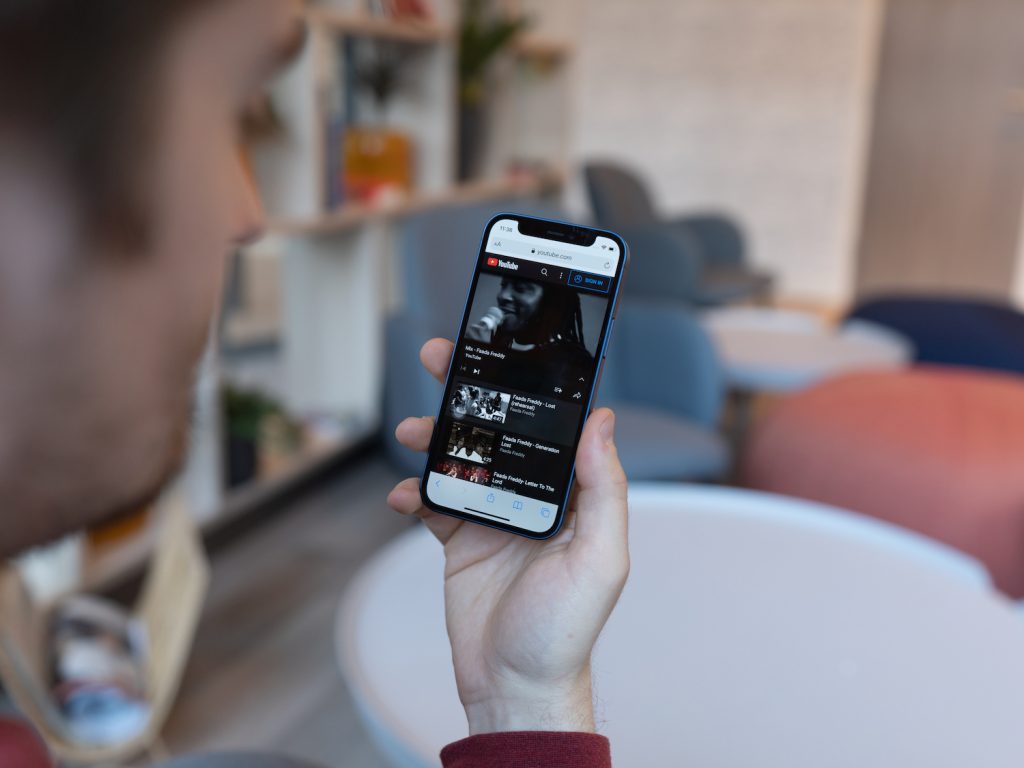
The 12 mini also turned in a very strong showing as a recording device, placing it in the top echelon in that aspect of our audio rankings. It produced a great timbre performance, with excellent dynamics, thanks to a sharp attack and good punch. The instrument and voice audio envelopes are well preserved. Spatial performance was also strong, thanks to good localizability, wideness, and distance. For loudness, the iPhone 12 mini is among best in class in every use case, and it is particularly excellent in selfie and meeting scenarios.
As for drawbacks, the microphones are easily occluded. Our engineers noticed several kinds of artifacts, especially heavy compression and limiting that induces strong pumping effects when recording loud content (such as electronic music at a concert.) Naturalness of background sounds and the signal-to-noise ratio (SNR) were impaired by a pretty dark tonal balance — meaning that the tonal balance was a bit too bass-oriented and treble was less exposed — especially in the urban use case.
Sub-scores explained
The DXOMARK Audio overall score of 73 for the Apple iPhone 12 mini is derived from its Playback and Recording scores and their respective sub-scores. In this section, we’ll take a closer look at these audio quality sub-scores and explain what they mean for the user.
Playback

Timbre
Apple iPhone 12 mini
69
89
Timbre tests measure how well a phone reproduces sound across the audible tonal range and takes into account bass, midrange, treble, tonal balance, and volume dependency.
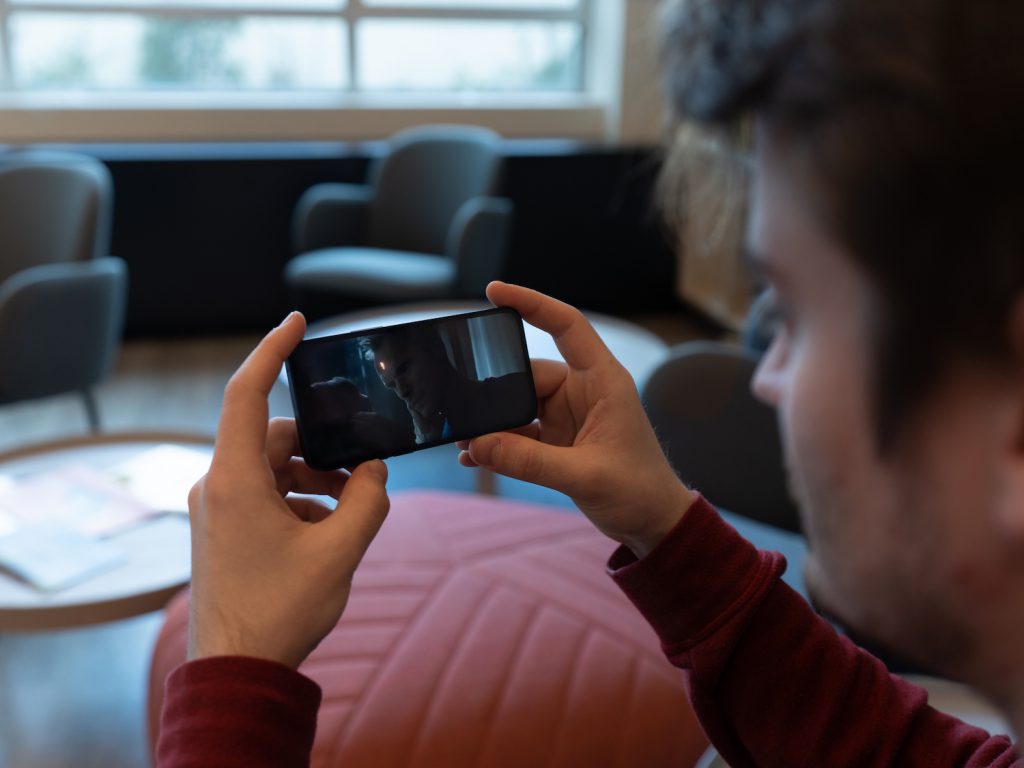
The Apple iPhone 12 mini turned in a very solid performance for timbre, with respectable scores in every use case. The lack of bass has an impact on overall tonal balance, but the performance is still quite good when you consider how small the device is. The high-mids are quite prominent and aggressive.

Dynamics
Apple iPhone 12 mini
71
81
DXOMARK’s dynamics tests measure how well a device reproduces the energy level of a sound source, and how precisely it reproduces bass frequencies.
The Apple iPhone 12 mini performed quite well in dynamics: the device has good attack at nominal volume, though the device is slightly less punchy because of the lack of low-end extension; this was in contrast to the iPhone 12, which had more low-end extension. But despite the lack, the 12 mini still maintains a satisfactory level of bass precision.

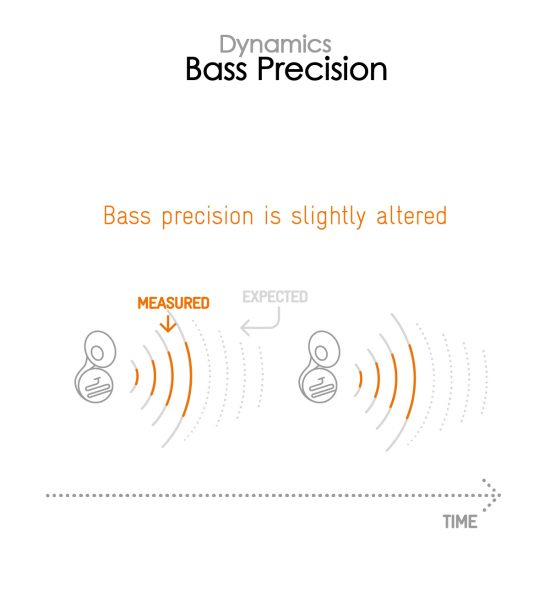

Spatial
Apple iPhone 12 mini
67
88
The sub-attributes for perceptual spatial tests include localizability, balance, distance, and wideness.
Overall, the iPhone 12 mini turned in a strong spatial performance. Localizability was good, with the reduced bass helping keep a precise sense of where sounds are coming from. The wideness is great overall, but it is diminished in portrait mode by a narrow audio scene. As noted earlier, the audio doesn’t rotate accordingly in landscape mode. Balance performance was great: voices are perceived at the center of the device, and distance perception was very realistic because voices were perceived in the correct location.
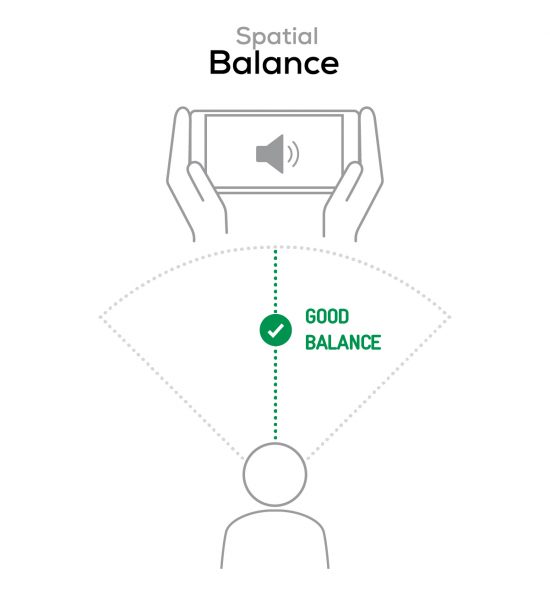
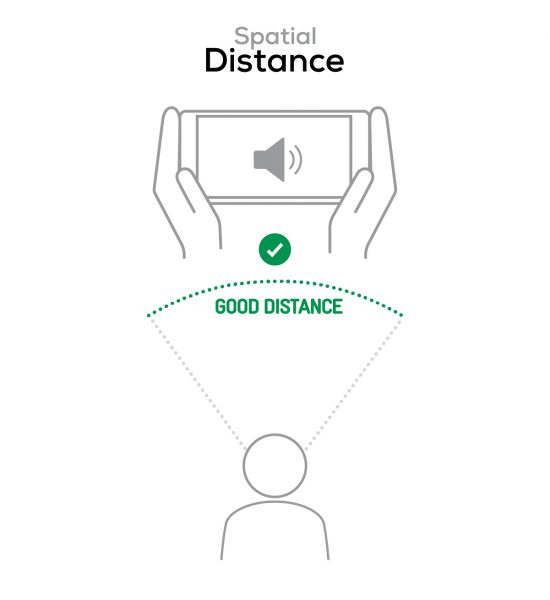

Volume
Apple iPhone 12 mini
72
91
Volume tests measure both the overall loudness a device is able to reproduce and how smoothly volume increases and decreases based on user input.
In volume testing, the Apple iPhone 12 mini did quite well across all our use cases at both minimum and maximum volumes. At minimum volume, it was still loud enough to make quiet content such as classical music intelligible. The iPhone 12 is slightly louder than the 12 mini for musical content when at maximum volume, and the iPhone 12 is louder than the iPhone 12 mini with all types of content at the minimum volume step.
| Hip-Hop | Classical |
| 74.2 dBA | 70.9 dBA |
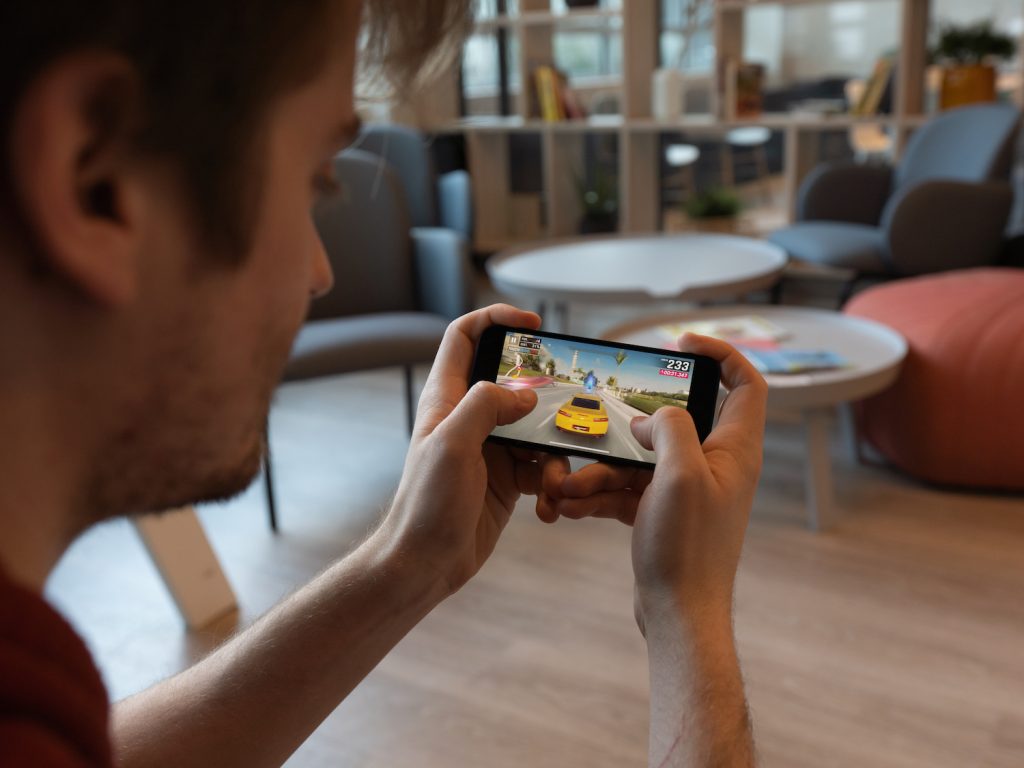

Artifacts
Apple iPhone 12 mini
85
113
Artifacts tests measure how much source audio is distorted when played back through a device’s speakers. Distortion can occur both because of sound processing in the device and because of the quality of the speakers.
The iPhone 12 mini had a very good score for artifacts, surpassing the iPhone 12 Pro Max and the iPhone 12 by one point, though not quite hitting the top score of 90 in this attribute (reached by the two versions of the Samsung Galaxy Note20 Ultra 5G and by the Black Shark 3 Pro). There were few artifacts overall, with small glitches and distortions that can be perceived only by trained listeners like our engineers; some bass distortion at nominal and maximum volumes do occur. The iPhone 12 mini’s speakers were difficult to occlude when playing games — its small size is an advantage in this regard.
Recording

Timbre
Apple iPhone 12 mini
83
91
As a recording device, the Apple iPhone 12 mini turns in a great timbre performance overall. In both life video and selfie video, tonal balance is good, with solid trebles and fairly good midrange. The slight lack of high-end extension impairs clarity. The device worked particularly well in the high sound pressure level (SPL) use case (that is, a loud electronic concert setting), preserving balanced timbre and well-defined bass.
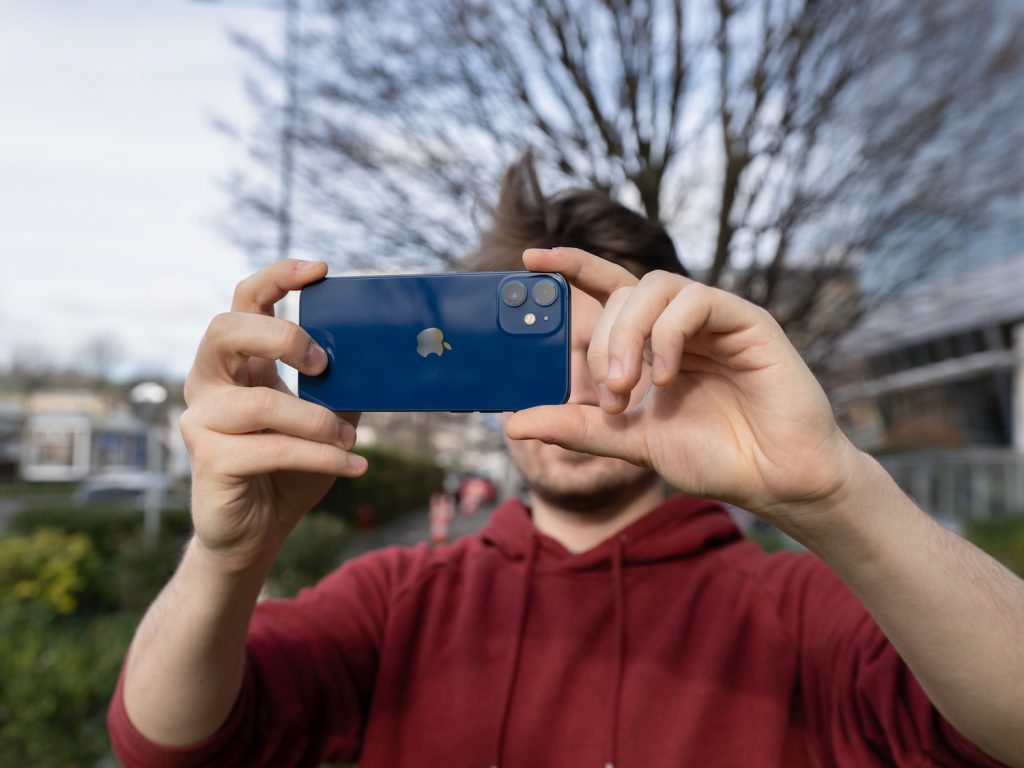
The midrange is focused on the low-mids, which impairs the natural rendering of voices.

Dynamics
Apple iPhone 12 mini
75
81
Dynamics in recording is another strong aspect of the iPhone 12 mini. The SNR is good, but background noise is very present because of a strong boost to the low-mids. The dynamics envelope is good in loud environments, but the attack of plosives (p and b sounds) is a bit flat, making it slightly more difficult to differentiate voices from the background noise.
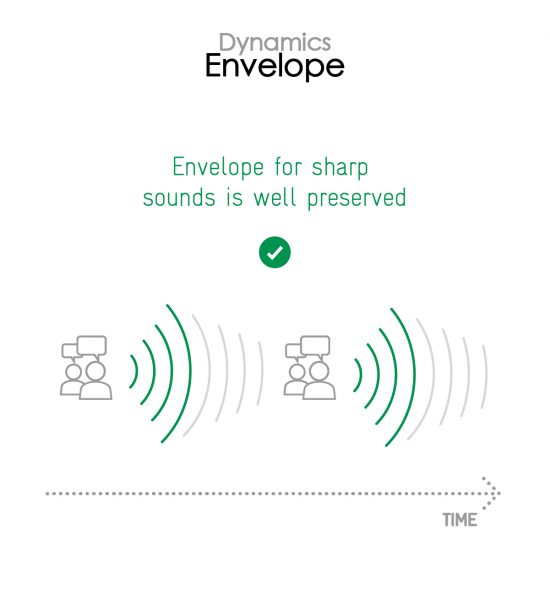
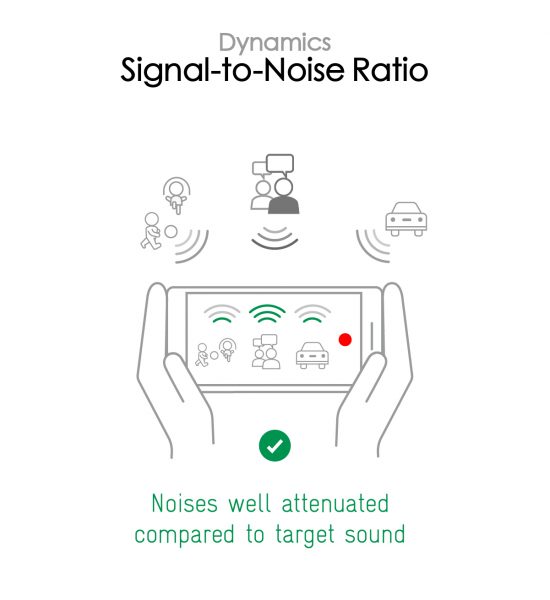
By contrast, when recording in quieter environments, plosives are sharp and present, making voices very comprehensible.

Spatial
Apple iPhone 12 mini
63
78
The iPhone 12 mini does a nice job of capturing a sense of space in the audio scene. In life video, it provides good localizability as well as good wideness and a realistic perception of distance. Selfie video, on the other hand, is slightly less precise. Considering the device is in portrait mode for selfie video, the preservation of wideness is good, especially keeping in mind the small size of the device.

Volume
Apple iPhone 12 mini
77
99
Our engineers noted that the volume performance of the iPhone 12 mini was good, producing adequate and satisfactory loudness of voices, as in the meeting use case.
Here are our test results, measured in LUFS (Loudness Unit Full Scale). As a reference, we expect loudness levels to be above -24 LUFS for recorded content:
| Meeting | Life Video | Selfie Video | Memo |
| -24.8 LUFS | -22.1 LUFS | -20.1 LUFS | -18.6 LUFS |
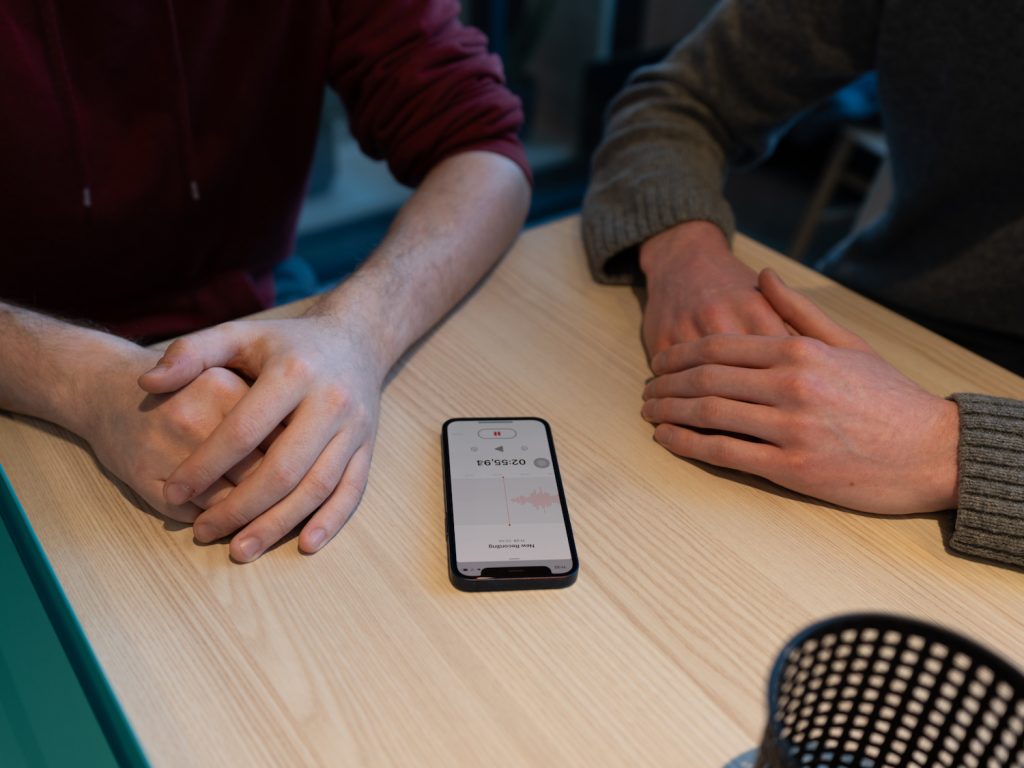

Artifacts
Apple iPhone 12 mini
71
97
The consistent quality continues in the artifacts attribute, with a good score reflecting a fine overall performance. Our engineers perceived just a few artifacts overall, such slight distortion on shouting voices, for example. Furthermore, aggressive compression and a noticeable hard limiter impaired those loud voices.
You can check for artifacts yourself in this sample recording:

Background
Apple iPhone 12 mini
54
60
The background performance was good overall, with natural-sounding background that was slightly dark because of the boost to low-mids. The background also had strong sibilances that were not properly limited or compressed.
Conclusion
Apple has managed to squeeze high performance into a small package with the iPhone 12 mini. Following in the steps of the iPhone 12, it has advanced on previous iPhones as both a playback and recording device, and because it’s significantly smaller than the iPhone 12, that accomplishment is even more impressive. As a playback device, the iPhone 12 mini produces good timbre, and its spatial performance is solid, making its audio a valuable aspect of the video-watching experience. As for drawbacks, there’s the fact that the audio scene doesn’t rotate with the position of the phone. A lack of low-end extension and reduced loudness impairs punch, and the lack of bass and low-mids impairs tonal balance.
As a recording device, this pocket-sized tool produces big results, capturing a nice range of timbre, very good dynamics, good spatial performance, and good loudness as well. The drawbacks include microphones that are too easily occluded, a few minor artifacts (including pumping when recording high SPL content), and a bit of an issue with the way a dark tonal balance disrupts background naturalness and the signal-to-noise-ratio.
Playback
Pros
- Good timbre, spatial, and dynamics performances
- Attack and bass precision are good despite lack of low-end extension
- Hard to occlude speakers when playing games
Cons
- Punch is impaired by the lack of low-end extension
- Tonal balance is hindered by lack of bass and low-mids
Recording
Pros
- Great timbre performance
- Very good dynamics thanks to sharp attack and good punch
- Good spatial attributes make watching videos and listening to music quite pleasant.
Cons
- Microphones easily occluded
- Heavy compression and limiting create pumping effects when recording high SPL content.


DXOMARK encourages its readers to share comments on the articles. To read or post comments, Disqus cookies are required. Change your Cookies Preferences and read more about our Comment Policy.